Everyone knows that prolonged exposure to sunlight can damage your skin. Over time, that can increase your risk of skin cancer, including melanoma. That’s why it’s essential to wear sunscreen and sunglasses with lenses that block UV light, and to avoid the sun between 11 a.m. and 2 p.m. — the period when it emits the most substantial UV radiation.
Everything I wrote above is taken as common sense, and it’s what the American Academy of Dermatology and most dermatologists will tell you.
The problem is, most of this advice is not based in sound science. And in some cases, it’s the opposite of what you should be doing.
This article will explain:
- How to avoid sunburn naturally (and without wearing sunscreen).
- How diet impacts your skin’s natural defense mechanisms against radiation.
- The importance of sun exposure for optimal health.
- What I’ve done to prevent sunburns (despite no longer wearing sunscreen).
I’ll also briefly discuss why most sunscreen is terrible for your health (including most mineral-based sunscreen).
Why You Don’t Need Sunscreen
Mainstream medical advice is to use sunscreen before exposing your naked skin to sunlight, even on cloudy days, because there is (apparently) “no such thing as a healthy tan.”
While such advice might apply to vampires, humans evolved over millions of years with daily prolonged sun exposure — and without having access to sunscreen or sunglasses. Plus, sunscreen is a relatively modern invention, dating back to just 1938 (when Franz Greiter, a Swiss chemistry student, got sunburnt while climbing a mountain in Austria). And it didn’t become popular until the late 1970s.
Unfortunately, most mainstream outlets and healthcare providers never ask themselves the question of why cases of skin cancer have skyrocketed in recent years, despite the prevalence of sunscreen.
For example, GoodRx Health recommends the following five tips to avoid sunburn naturally:
- Cover yourself with protective clothing and a hat.
- Wear sunglasses to protect your face and eyes.
- Use an umbrella or parasol for outdoor activities.
- Avoid UV light.
- Eat plant-based foods that provide sun protection, including canola oil.
The stupidity of such advice — given, in this case, by an actual medical doctor — is mind-boggling (as you’ll see as you continue reading).
So the question is this: what did previous generations (including our Paleolithic ancestors) do to protect themselves from UV radiation without the use of sunscreen, sunglasses and canola oil?
Ways to Avoid Sunburn Naturally
Here are five scientifically-sound and evolution-proven strategies for preventing sunburn naturally without avoiding the sun’s rays or using toxic sunscreen.
1. Stop Wearing Sunglasses
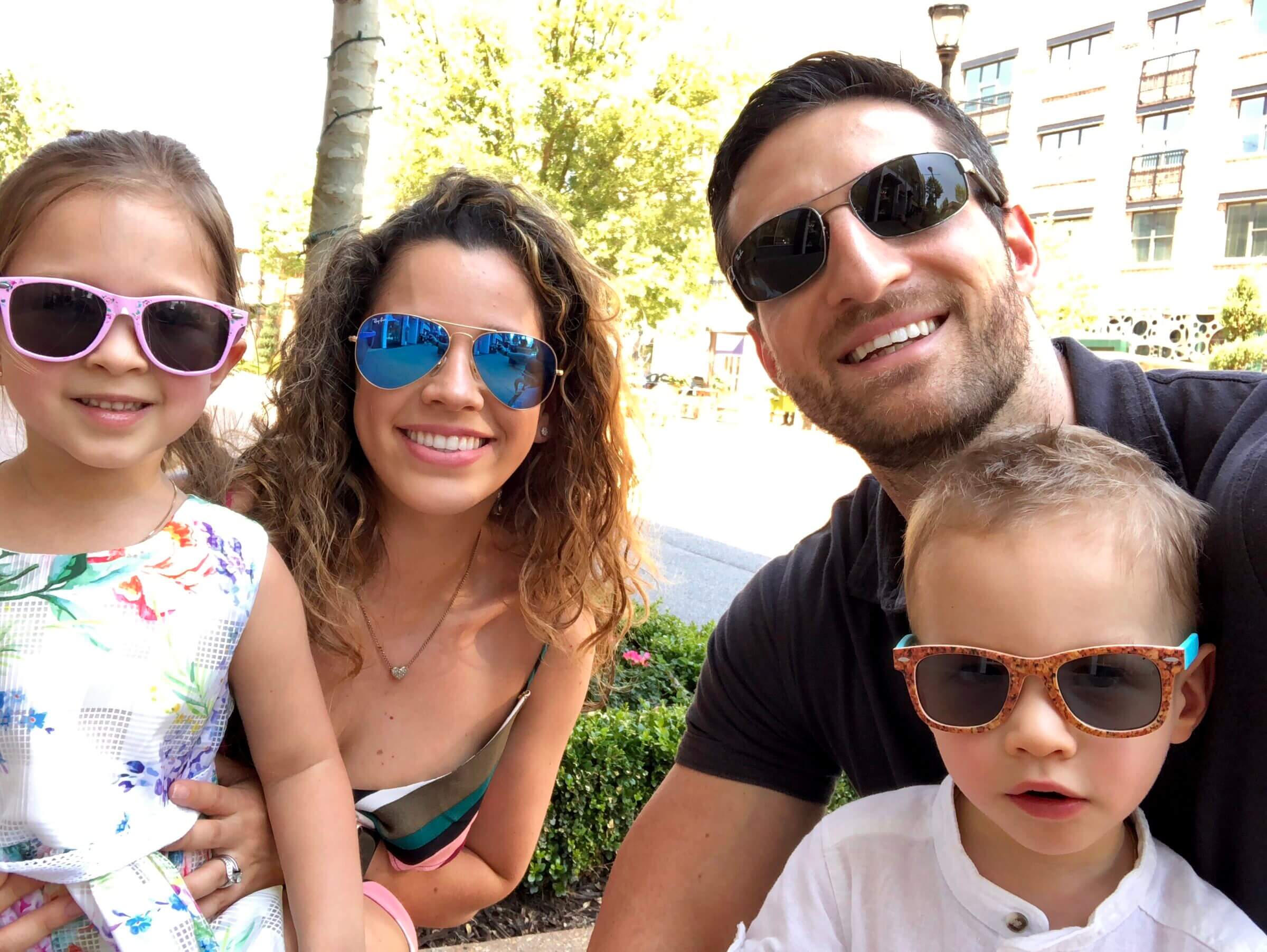
The problem is that when UV light enters your eyes, cells in your body (called melanocytes) produce a natural skin pigment called melanin, which not only gives you a tan but also protects your exposed skin from the damaging effects of UV radiation. Wearing sunglasses interferes with this important process.
Specifically, melanin absorbs UV rays and transforms the energy into harmless heat through a process called “ultrafast internal conversion.” This prevents the UV rays from causing direct damage to the DNA and cellular structures within the skin. Melanin also scatters some of the UV rays, thereby reducing the amount of radiation that penetrates deeper layers of the skin.
Melanin has antioxidant properties that help combat the oxidative stress caused by UV exposure. Oxidative stress can lead to cell damage and is a contributing factor in skin aging and skin cancer.
Last but not least, melanin can shield the nucleus of the skin cell, thereby protecting the DNA from UV-induced mutations that can lead to skin cancers like melanoma.
Wearing sunglasses that block UV light prevents your body from making enough melanin to protect your skin, and thus you burn more quickly (and tan less).
That’s why I stopped wearing sunglasses when I go outside (except for on rare occasions, such as when a low-standing sun impairs traffic visibility while driving).
Of course, I don’t recommend staring directly into the sun unless it’s just above the horizon (i.e., during sunrise or sunset). Additionally, there is a limit to how much UV radiation healthy eyes can handle safely before there is a risk of side effects. So, if you have to expose your naked eyes to direct sunlight for extended periods, I would put on sunglasses after a couple of hours.
2. Slowly Build Up Your Sun Exposure
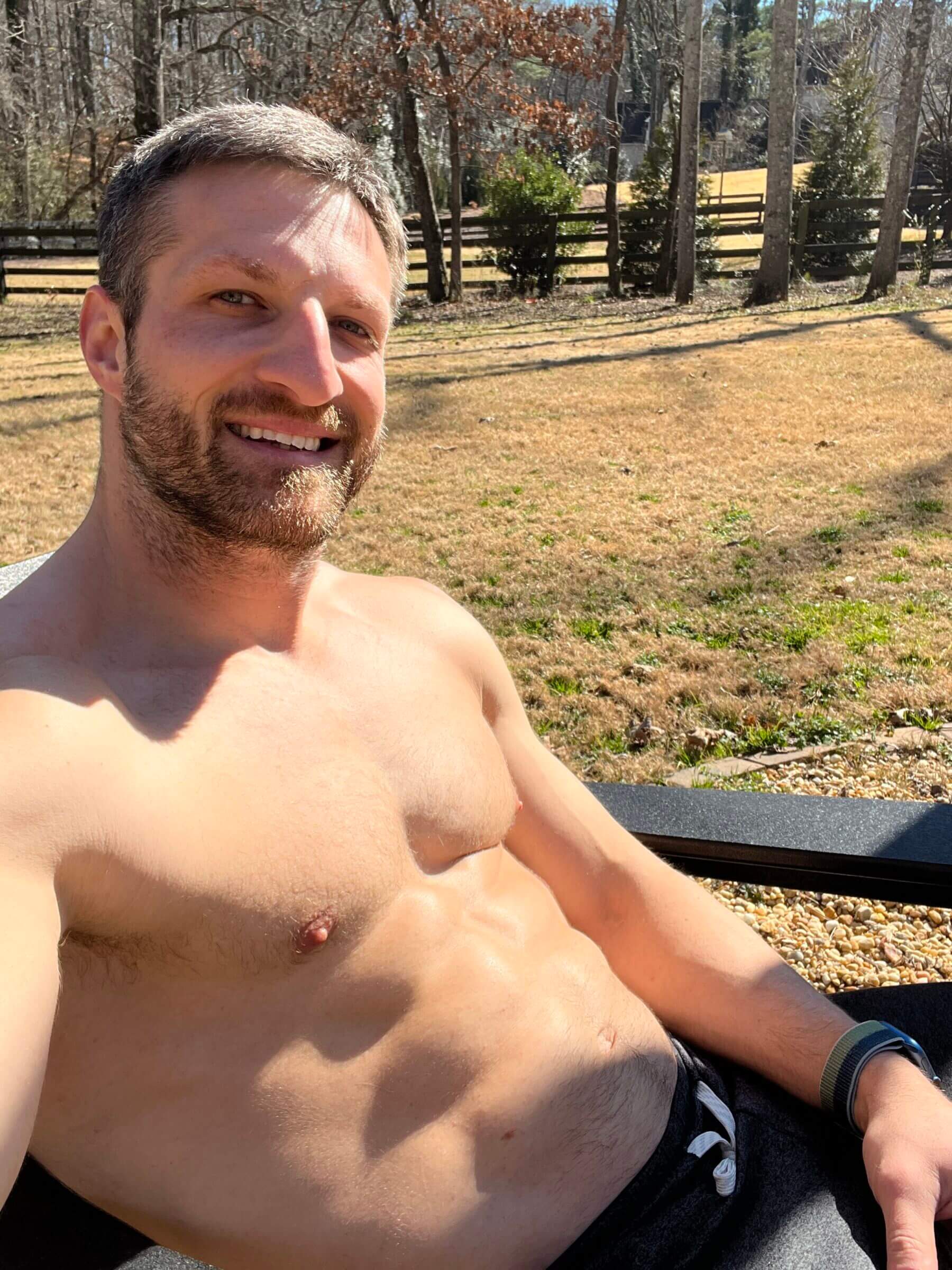
The conventional wisdom is to limit your sun exposure to 10-60 minutes without sunscreen (depending on your skin type), but doing so actually makes you more likely to get burned.
Your skin’s resilience to UV radiation can improve over time, and if your goal is to wean yourself off the need for sunscreen, it’s important to start exposing your naked skin to natural sunlight during the year’s colder months, when UV radiation levels are lower.
During the winter and spring, I regularly sunbathe on sunny days when the sun is the highest without a t-shirt to allow my “sun callus” to build up before the UV index peaks in July.
If you have sensitive skin or a pale complexion, it’s critical to slowly increase your exposure to sunlight over the course of a few weeks or even months.
In other words, don’t take off your shirt for the first time in the middle of the summer when the UV index is at its highest. Instead, slowly build up your exposure to sunlight during the months leading up to summer.
I don’t recommend tanning beds during the colder months of the year because they likely emit higher amounts of UV rays than your skin can handle at the time. Plus, you have to wear goggles, which prevents your body from making melanin to help protect your cells from the damage inflicted by the UVA rays emitted by tanning beds.
3. Avoid Seed Oils (In Favor of Saturated Fats)

As I discussed at length in my article about the dangers of polyunsaturated fatty acids (PUFAs) and vegetable oils (aka seed oils), the chemical structure of PUFAs makes them relatively unstable and increases their likelihood of oxidation.
Oxidized fatty acids in your cells cause mitochondrial damage, leading to inflammation. That weakens your body’s ability to deal with the stressor that is UV radiation and increases your skin’s susceptibility to burning.
I’ve noticed dramatic improvements in my body’s ability to handle sun exposure without wearing sunscreen after I cut out all seed and vegetable oils from my diet.
4. Eat An Animal-Based Diet
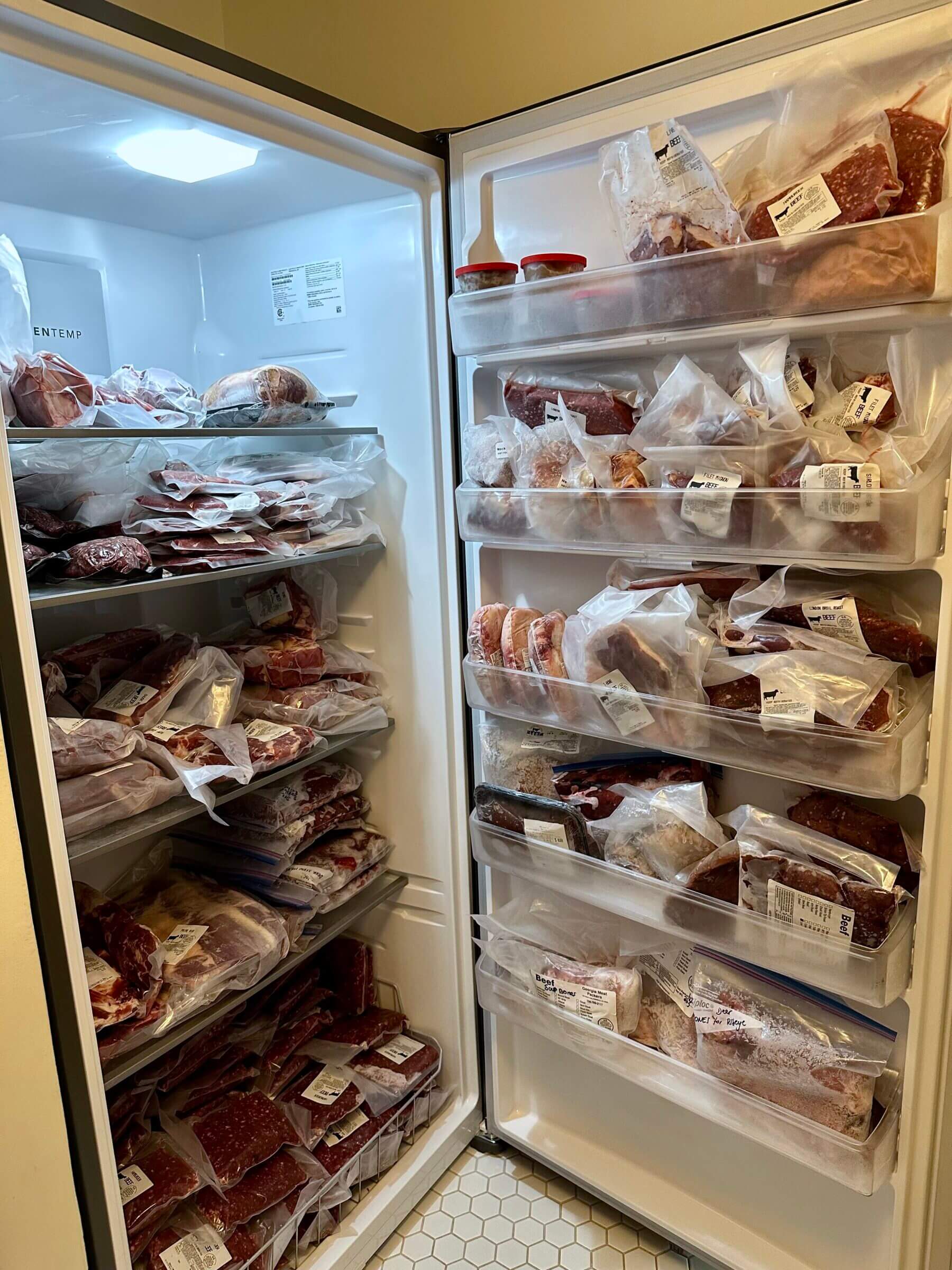
Your body requires certain nutrients to safely process UV light from the sun and make melanin. One of the critical amino acids required by the melanin pathway is tyrosine, which gets converted with the help of the enzyme tyrosinase to L-DOPA.
Other micronutrients required to protect the skin against damage from UV light include vitamin A, cholesterol, saturated fats and copper.
The meat and organs of responsibly raised animals are the best source of bioavailable and readily absorbable vitamins, minerals, fatty acids and amino acids, including tyrosine. In contrast, most plant-based foods have incomplete amino acid profiles, meaning they’re missing at least one of the essential amino acids found in animal protein.
That’s one of the reasons why I consume ample amounts of animal protein and organ meats (often in the form of freeze-dried beef organ capsules) with every meal.
5. Exposure Yourself to Morning Sunlight
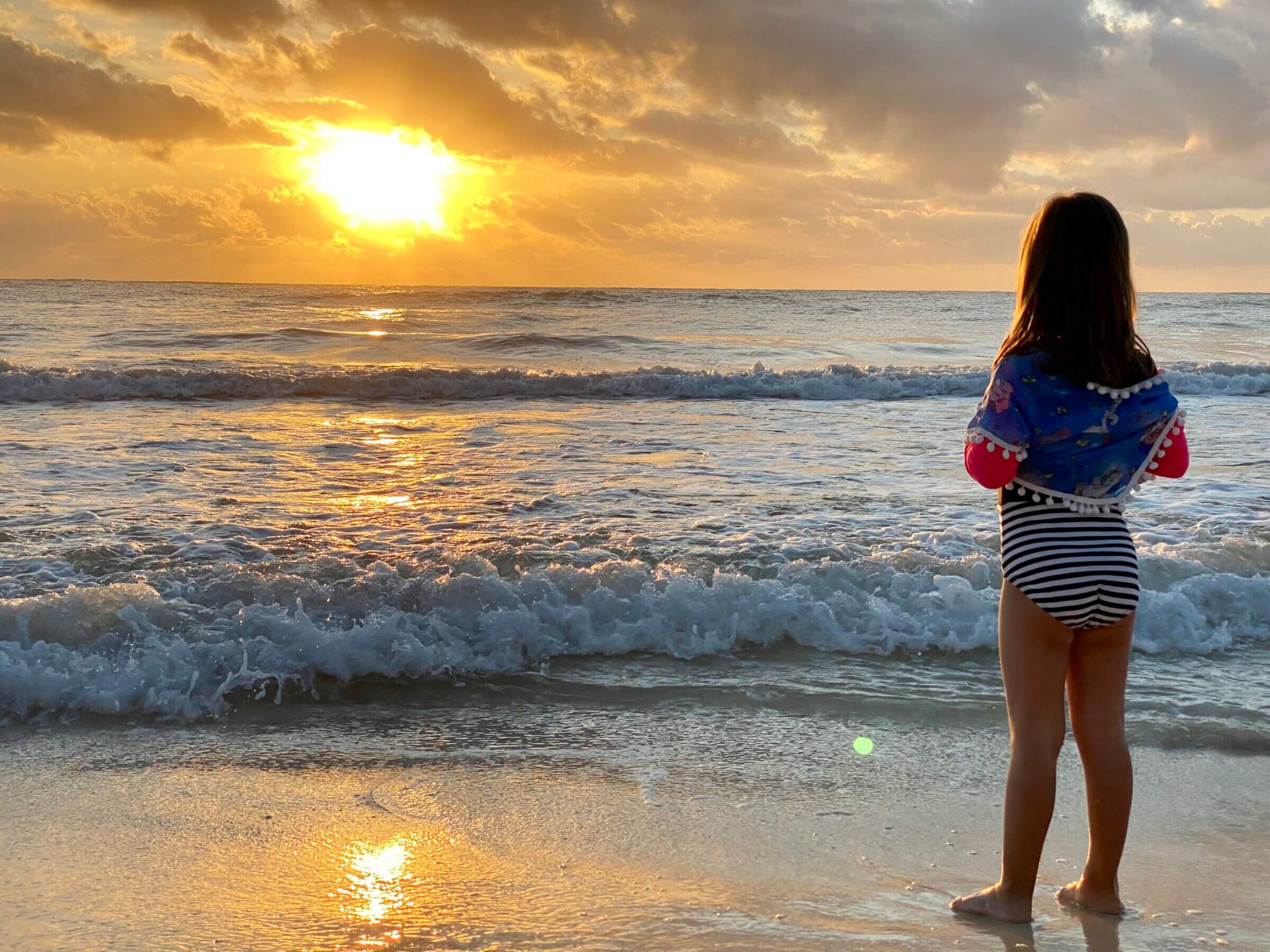
Exposing your naked eyes and skin to the morning sunlight not only positively impacts your circadian rhythm (helping you sleep better), but it can also help make your skin more resilient to UV radiation.
That’s because light at sunrise and the early morning hours is relatively high in red and near-infrared (NIR) radiation, but low in UVA and UVB wavelengths. The lower amounts of UV rays can help your skin become more resilient without inflicting too much damage.
Think of it as a hormetic stressor (what doesn’t kill you makes you stronger), as I discussed in an episode of my Primal Shift Podcast.
Additionally, there is scientific evidence that red and near infrared light in the 611-650 and 670-850 nanometer (nm) spectrum has a positive impact on skin renewal, cell health and tissue growth.
If exposure to early morning sunlight isn’t feasible, you can leverage a high-quality red light therapy panel such as the MitoPro 1500 (which I have set up in my office).
The Importance of Sun Exposure

It wasn’t until I started doing research into the effects of sunlight on the human circadian rhythm and hormone production that I learned about the endocrine-disrupting chemicals found in most sunscreens. But the more I learned, the more I started to question everything I thought I had known about sun exposure.
You can learn more about those topics in my article on the core principles of a healthy lifestyle, but here are the key areas directly influenced by sunlight:
- Supports a healthy circadian rhythm, daytime alertness and sleep.
- Triggers vitamin D production, which is important for optimal immune system function.
- Supports testosterone production.
- Influences the release of hormones, including serotonin and melatonin.
- Improved calcium absorption.
- Triggers the production of melanin.
- Reduces the risk of developing seasonal affective disorder (SAD).
Evidently, it’s critical for our health to get sufficient exposure to sunlight.
Early humans and our Paleolithic ancestors were exposed to sunlight for millions of years without wearing sunscreen, so you would think that the human body could handle it without developing significant health issues, such as skin cancer.
But what does the evidence say about avoiding the sun?
A 2016 study concluded the following:
“Avoidance of sun exposure was a risk factor for all-cause death of the same magnitude as smoking.”
Another review published in the journal Dermato-Endocrinology clearly states that the benefits of sun exposure outweigh the negatives.
But what about the risk of developing melanoma?
Based on statistics from the Centers for Disease Control and Prevention (CDC) and studies I’ve reviewed, the risk of developing melanoma (a common type of skin cancer) has dramatically increased over the past few decades.
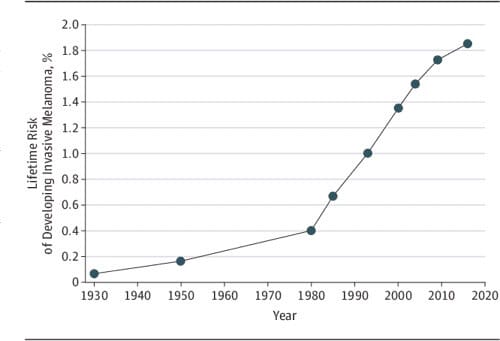
For example:
- In 1975, only 10 in 100,000 people were diagnosed with skin cancer. In 2019, that number had more than doubled to 27 in 100,000.
- In 1930, the lifetime risk of developing invasive melanoma was less than 0.1%. In 2020, the risk was over 1.8%.
So how is it possible that despite the significantly higher prevalence of sunscreen use, more awareness of the alleged dangers of sun exposure, and a much more significant percentage of our population leaving pitchforks and tractors behind in favor of computers and office chairs, we are experiencing massively higher rates of skin cancer?
A recent study even concluded that office workers are at greater risk of melanoma than those who work outside.
That doesn’t make sense.
Unless, of course, the problem isn’t sunlight, but changes to our lifestyle that have made our skin more prone to sun damage by UV radiation.
Why Most Modern Sunscreen Is Bad for You
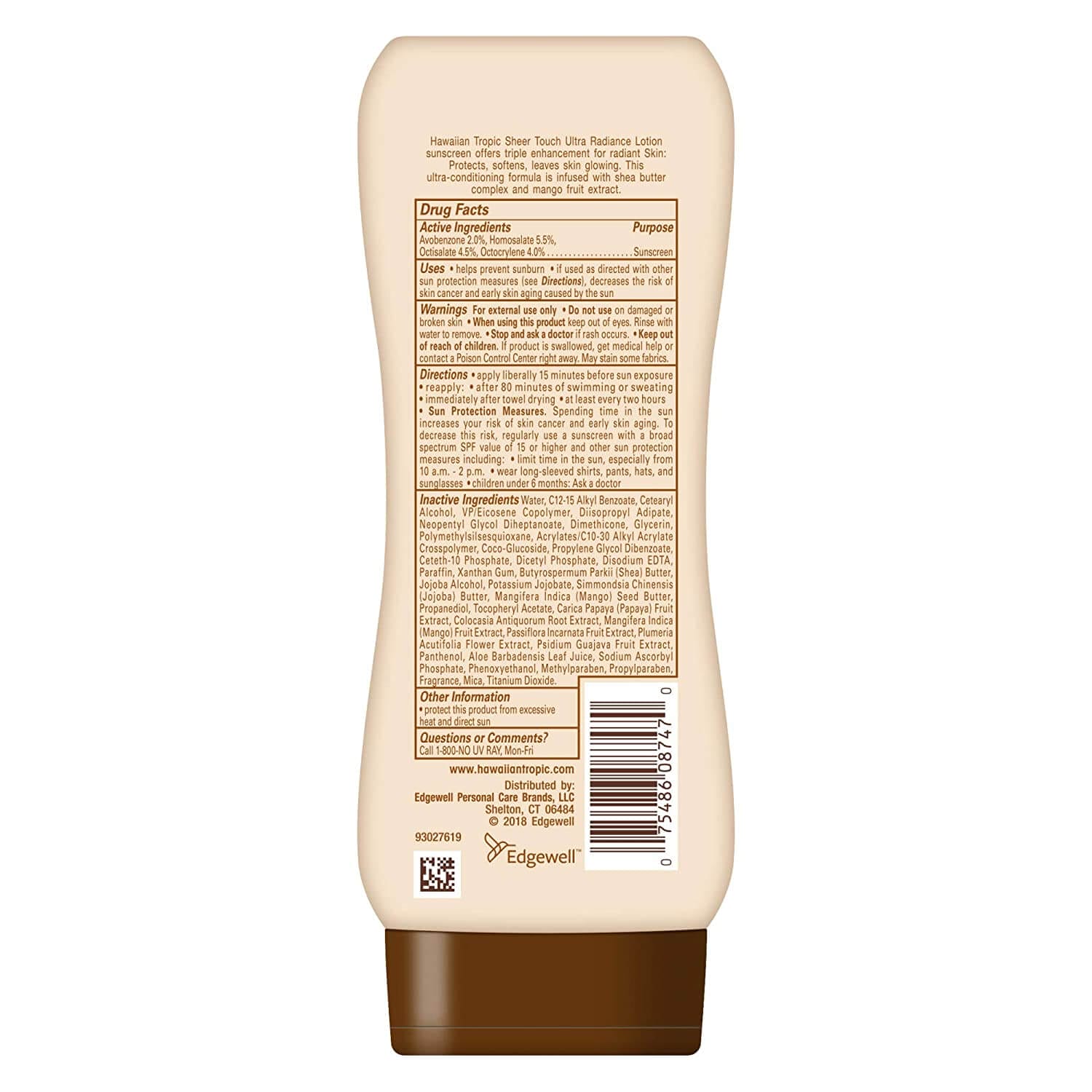
Without getting too much into the nitty-gritty of the health issues associated with modern sunscreen (which will be the subject of a separate article), it’s vital to understand that sunscreen is often not only counter-productive but harmful to your health.
For example, virtually all non-mineral-based sunscreens contain endocrine-disrupting chemicals, including benzophenone (BP) and 4-methylbenzylidene (4-MBC).
As shown in the image above, Hawaiian Tropic is like an estrogenic “best of” list, containing an insane number of “phen,” “benz” and “paraben” ingredients (as I discussed in my article about how xenoestrogens make you infertile and sick).
But even mineral-based sunscreen isn’t much better. A study conducted in collaboration with Oregon State University discovered that, “sunscreen that includes zinc oxide, a common ingredient, loses much of its effectiveness and becomes toxic after two hours of exposure to ultraviolet radiation.”
As a result, I generally avoid all sunscreens and leverage clothing if I have to expose myself to harsh UV rays for longer periods than my skin can handle.
How Long Can You Stay In the Sun Without Sunscreen?
If you follow all the steps outlined in this article, over time your resilience to UV rays will increase. But specifically how long you’ll be able to stay in the sun without some kind of protection depends on a number of factors, including:
- Skin type (darker skin can handle UV better than pale skin).
- Genetics (which likely influences skin type).
- Time of the year (UV radiation is stronger in the summer and weaker in the winter).
- Location (UV radiation is stronger the closer you are to the equator).
- Acquired UV resilience.
The Hadza of northern Tanzania live very close to the equator and are in the sun all day without being fully covered or wearing sunscreen. Someone with very pale skin will probably never be able to pull that off, no matter what steps they take.
In other words, there is likely some trial and error involved in finding out where your sweet spot is. I usually “feel” when I need to get out of the sun. And so far, relying on that feeling has worked.
For me, that feeling usually starts emerging after about 90 to 120 minutes of midday summer sun exposure. If I don’t get out of the sun by then, my skin reddens.
I experienced temporary skin reddening once or twice during the past few years, but it never lasted longer than a few hours (i.e., it was gone the next morning). I attribute that fast recovery to my skin’s resilience and, in particular, dietary factors.
My Love/Hate Relationship With Sun and Sunscreen

When I was a kid, I suffered from terribly itchy allergies caused by sun exposure (or so I thought). As a result, whenever our family would go on vacation to the beach, I would spend most of my time in the shade under an umbrella instead of playing in the water with my younger brother.
But at some point during my teen years, I stopped having an allergic reaction to sun exposure. Instead, if I stayed in the sun for too long, I would simply get a good old-fashioned sunburn.
Since my parents knew about the dangers of sunburns in the context of developing skin cancer, they were adamant about applying liberal amounts of sunscreen and covering my skin with clothing.
But the older I got, the more I hated the feeling of sticky sunscreen on my skin.
At the same time, I was convinced that a tan was the first sign of skin damage and should be avoided at all costs.
If you’ve been following me for a while, you probably remember that my wife and I started making significant lifestyle changes when our daughter was born in 2013. During that time, we realized that everything we thought we knew about sun exposure was wrong and not conducive to optimal health.
That’s when we stopped wearing sunscreen and began implementing many of the strategies outlined in this article.
These days, I follow an animal-based diet that’s rich in micronutrients, such as vitamin A, copper, cholesterol, and saturated fatty acids that help protect my eyes and skin while avoiding inflammatory seed oils. I aim to expose my naked skin to natural sunlight year-round, and I don’t wear sunglasses with UV protection unless absolutely necessary.
My wife and kids do the same, and I don’t recall the last time either of us had a sunburn — despite having spent significant time outside and without wearing sunscreen.
Final Thoughts: Yes, You Can Enjoy the Sun Without Sunscreen
The healthiest way to protect yourself from the damaging effects of UV rays is to gradually increase your exposure while refraining from interfering with your body’s natural defense mechanisms.
You can also leverage natural products such as coconut oil, but keep in mind that they usually offer a relatively low sun protection factor (SPF) in the 2-8 range. If you have to stay in the sun for longer than you think your skin can safely handle, I recommend wearing sun-protective clothing, such as long-sleeved shirts and a wide-brimmed hat.
If you didn’t get out of the sun in time and experience sunburn, non-toxic remedies such as coconut oil, aloe vera or beef tallow can help the healing process.
I also leverage high-quality lotions and moisturizers from brands such as One Skin and Young Goose to make sure my skin’s repair/damage ratio remains in my favor.
If you have no other option than using sunscreen, I recommend mineral-based products. The ones we have for emergencies are from One Skin and Babo Botanicals. They’re water-resistant, broad-spectrum sunscreen with SPF 30. Just make sure you get out of the sun or remove the product before it becomes toxic (at roughly the two-hour mark).

Michael Kummer is a healthy living enthusiast and CrossFit athlete whose goal is to help people achieve optimal health by bridging the gap between ancestral living and the demands of modern society.
Medical Disclaimer
The information shared on this blog is for educational purposes only, is not a substitute for the advice of medical doctors or registered dieticians (which we are not) and should not be used to prevent, diagnose, or treat any condition. Consult with a physician before starting a fitness regimen, adding supplements to your diet, or making other changes that may affect your medications, treatment plan or overall health. MichaelKummer.com and its owner MK Media Group, LLC are not liable for how you use and implement the information shared here, which is based on the opinions of the authors formed after engaging in personal use and research. We recommend products, services, or programs and are sometimes compensated for doing so as affiliates. Please read our Terms and Conditions for further information, including our privacy policy.
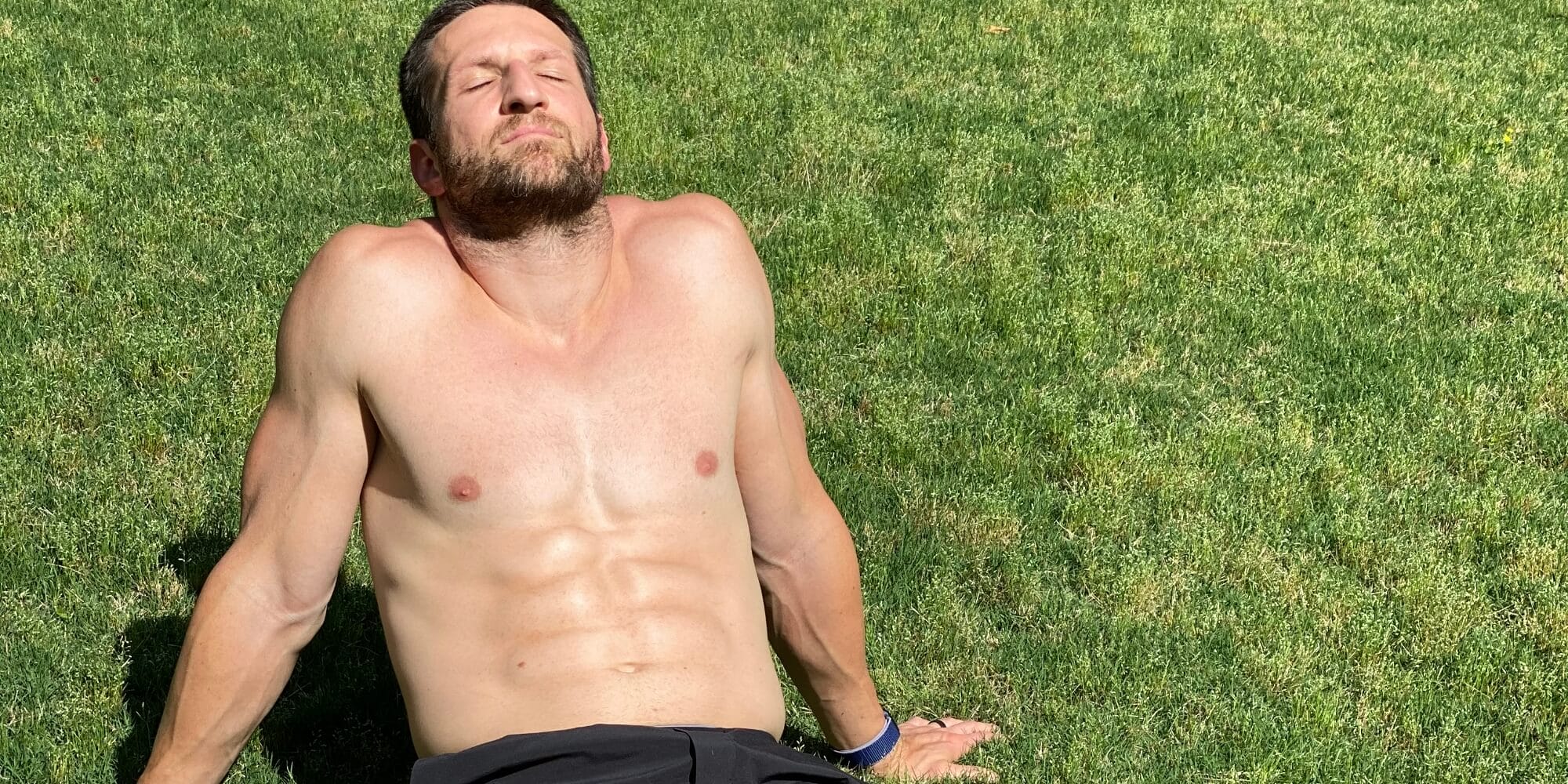

Last summer I travelled to Croatia for 3 weeks with a friend. She has dark hair, dark eyes and more naturally olive complexion. I am blonde with blue eyes and pale Scottish skin. However, I make a practice of walking in the am without sunglasses, refrain from seed oils and eat a diet full of grass fed and organic meats. She is a vegetarian and eats seed oils. She made a daily practice of slathering on the sunscreen multiple times a day and I refrained or used raspberry seed and carrot oils if we were going to be on the water and in direct sun for long periods of time. She had several sunburns on our trip and I did not burn once. I am a solid believer in your methods.
Hey Kyla,
Thanks for sharing. I’d like to hear your friend’s take on that “experiment!” Was she surprised?
Cheers,
Michael
I’ve been advised to apply sunscreen for a scar from a mole removal on my face. What are your thoughts on the sun and how it affects scars? Thank you.
Hey Pat,
That’s a great question! From a cosmetic perspective, there might be benefits of protecting the skin around your scar from UV light. So I’d suggest a non-toxic sunscreen like the one from OneSkin. I’d also consider using red light therapy to speed up the healing process and make for a less-visible scar.
Cheers,
Michael
Thank you for this honest blog post. I hope more people realize the truth.
Thanks for your feedback, Dana. I appreciate it!
Wonderful article. I am 60 years old and grew up in Greece, always under the sun, but and I never used sunscreens so far. I trained myself to be exposed to sun and over the years my natural resistance grew, not sure why I did that, it just felt right and I ignored all the recommendations. After few days that I gradually extend my exposure, I am naturally shielded, although I my type of skin is not dark and was always characterized as “sensitive” and risky for problems. Thus, I do not get sunburn any more, just that the exposure to the sun every season needs to be gradual in the first days. Congratulations to Michael Kummer for putting this reality many of us instinctively understand in words and scientific terms, thank you we feel safer now.
Thanks for your feedback Fotis, I appreciate it!
Great article, thank you.
But no citation for “ when UV light enters your eyes, cells in your body (called melanocytes) produce a natural skin pigment called melanin”?
So….that might not be true. If not, you can go back to wearing sunglasses and stop squinting all the time! ;-)
A quick Google search will reveal the information you’re looking for: https://news.brown.edu/articles/2011/11/melanin